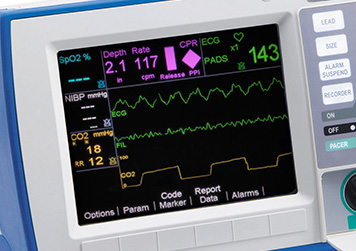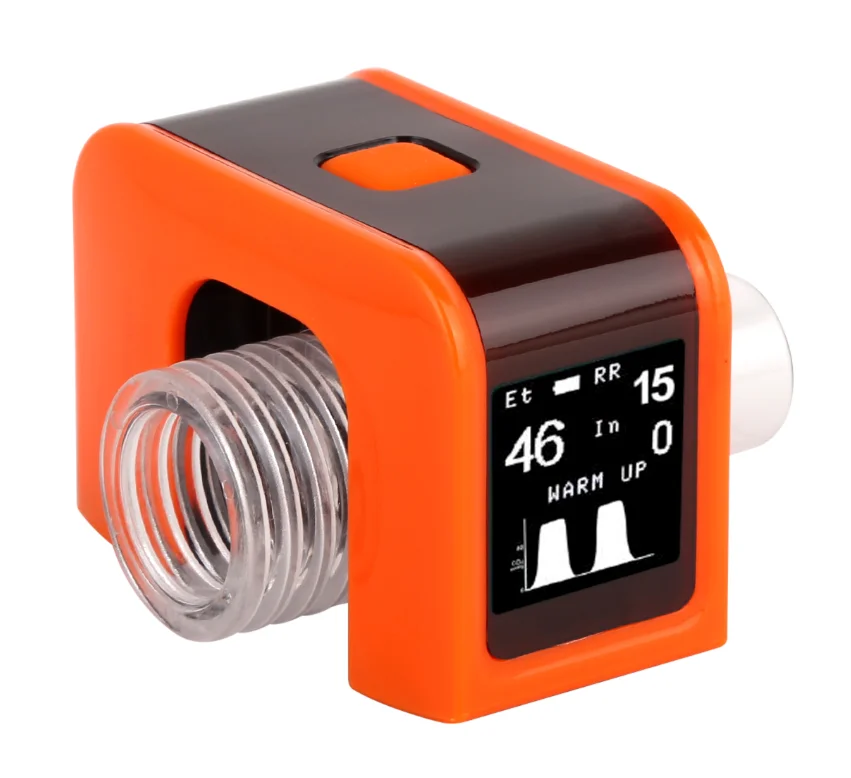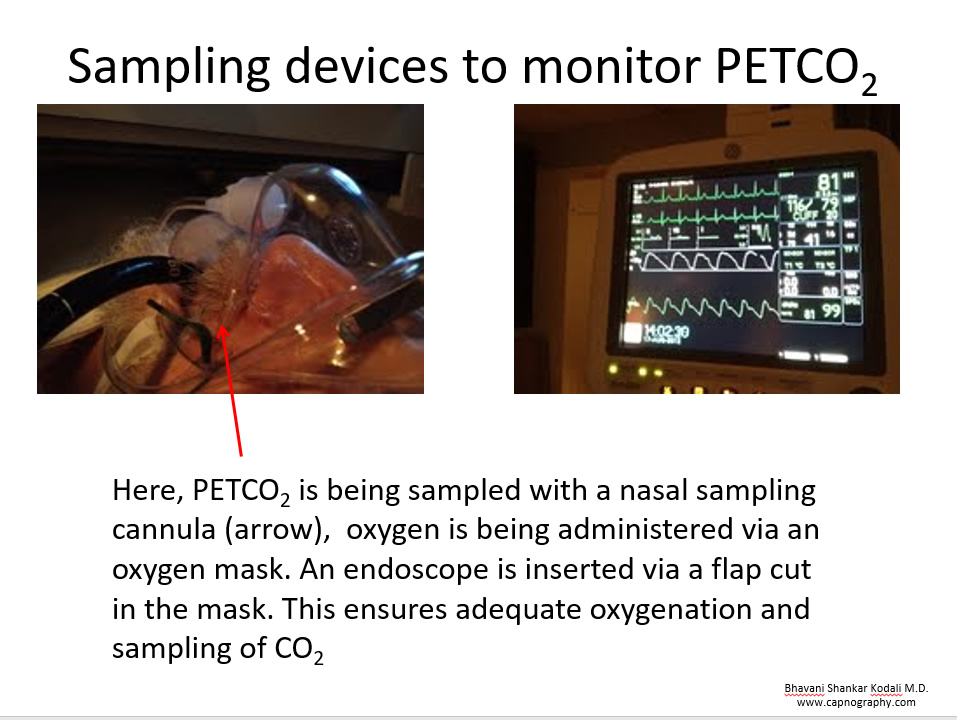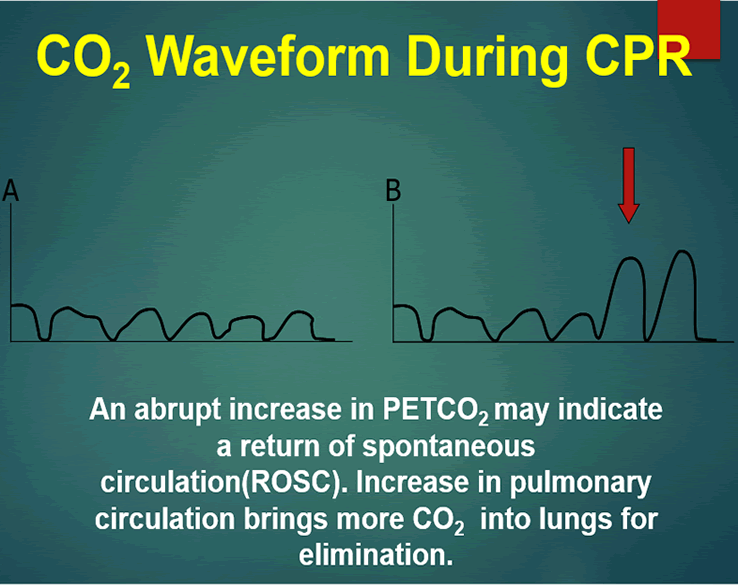end tidal co2 monitoring cpr
A real time waveform record of the concentration of carbon dioxide in the respiratory gases 2. The first sign of the return of spontaneous circulation ROSC during CPR is increase in ETCO2 therefore monitoring of ETCO2 provides very useful information to guide treatment during CPR 8 - 10.

End Tidal Co2 Etco2 Capnography For R Series Zoll Medical
However EtCO2 provides the same information an.

. This eliminates the need to wait for blood work chest-x-rays and other diagnostic tests. ETCO2 levels reflect the adequacy with which carbon dioxide CO2 is carried in the blood back to the lungs and exhaled. Increased CO during CPR.
The end-tidal carbon dioxide CO2 concentration has been found to correlate with cardiac output during and after cardiopulmonary resuscitation CPR in animal models. We monitored end-tidal CO2 values continuously during cardiac resuscitation in 23 humans while ventilation was held constant with a computer-controlled CPR Thumper. Waveform plus numerical value.
Chest compression provider tiring end-tidal CO2 value diminishes over time. EtCO2 is essentially to ensuring quality CPR. Available evidence has established that ETCO2 measurement can provide an indication of cardiac output and pulmonary blood flow24 Non.
End-tidal CO2 monitors can give healthcare providers an early warning if a patient is experiencing respiratory distress or going into respiratory failure. Also called capnometry or capnography this noninvasive technique provides a breath-by-breath analysis and a continuous recording of ventilatory status. In fact its commonly called the ventilation vital sign.
The normal values are 5 to 6 CO2 which is equivalent to 35-45 mmHg. Start studying End tidal CO2 Monitoring. Measurement of end-tidal carbon dioxide during CPR reflects cardiac output and can predict chances of ROSC.
End-tidal carbon dioxide ETCO2 is the level of carbon dioxide that is released at the end of an exhaled breath. Monitoring end-tidal CO 2 ET-CO 2 provides instantaneous information about ventilation how effectively CO 2 gas is being exhaledeliminated by the respiratory system perfusion how effectively CO 2 is being transported through the vascular system to the lungs and metabolism how effectively CO 2 is being produced by cellular metabolism. An ETCO2.
16 28 After ventricular. End-tidal carbon dioxide ETco 2 monitoring provides valuable information about CO 2 production and clearance ventilation. End-tidal CO2 EtCO2 monitoring is a noninvasive technique which measures the partial pressure or maximal concentration of carbon dioxide CO2 at the end of an exhaled breath which is expressed as a percentage of CO2 or mmHg.
In a study of in-hospital CPR from 2000 to 2008 59 of CPR survivors lived over a year after hospital discharge and 44 lived over 3 years. 1 evaluating the effectiveness of chest compressions and 2 identification of ROSC. We typically assess quality of CPR by palpable pulses but this can be challenging and even unreliable.
High quality CPR consistent waveform and end-tidal CO2 20 kPa. Arterial diastolic pressure 25 mm Hg may be useful but not all patient scenarios will be amenable to placement of an arterial line. This will cause a decrease in the ETCO2 end-tidal CO2 and this will be observable on the waveform as well as with the numerical measurement.
Two very practical uses of waveform capnography in CPR are. Normal ETCO2 in the adult patient should be 35-45 mmHg. 25 26 27 Flow of systemic venous blood to the pulmonary vasculature becomes ratelimiting for the elimination of CO 2 and a surrogate for blood flow produced by chest compressions.
This report focuses on ten of the 23. The American Heart Association recommends the use of end-tidal CO2ETCO2 as a marker of the quality of. 19 for patients with heart failure and 25 for patients with heart monitoring outside the.
10 to 20 mmHg during CPR was strongly associated with ROSC while persistent EtCO2 below 10 to 20 mmHg after 20 minutes of CPR had a 05 likelihood of ROSC. Cardio Pulmonary Resuscitation CPR ETCO2 concentration is a reliable index of effective heart compression during CPR which is associated with cardiac output 7 8. To identify whether any level of end-tidal carbon dioxide ETCO 2 measured during cardiopulmonary resuscitation CPR correlates with return of spontaneous circulation ROSC or survival in adults experiencing cardiac arrest in.
End-tidal CO2 monitoring allows for almost immediate information about what is going on with a patient. Learn vocabulary terms and more with flashcards games and other study tools. CPR is a low cardiac output state during which E tco 2 becomes less dependent on CO 2 production and ventilation and more linearly related to cardiac output.

Waveform Capnography Is A Commonly Used Monitor In The Operating Room And Is Increasingly Seen In Respiratory Therapist Student Icu Nursing Emergency Nursing

Etco2 Valuable Vital Sign To Assess Perfusion The Airway Jedi

The Impact Of Ventilation Rate On End Tidal Carbon Dioxide Level During Manual Cardiopulmonary Resuscitation Resuscitation

3 Waveform Capnography Showing Changes In The End Tidal Carbon Dioxide Download Scientific Diagram

Nonin Respsense Ii Etco2 Monitor Respiratory Monitoring

Challenges Of Capnography During Sedation Capnography

Pv Card Continuous End Tidal Co2 Monitoring In Cardiac Arrest
Emdocs Net Emergency Medicine Educationcapnography In The Ed Emdocs Net Emergency Medicine Education

Etco2 Valuable Vital Sign To Assess Perfusion The Airway Jedi

Cpr Mobile Code Stand With Capnograph Capnography

Use Capnography For A Patient In Cardiac Arrest Capnoacademy Capnoacademy

Ca60 Wireless Cpr End Tidal Micro Etco2 Capnometer Buy Etco2 Capnometer Product On Alibaba Com

3 Waveform Capnography Showing Changes In The End Tidal Carbon Dioxide Download Scientific Diagram

The Role Of Etco2 In Termination Of Resuscitation Jems Ems Emergency Medical Services Training Paramedic Emt News

Quantitative Waveform Capnography Acls Medical Training

M Velia Antonini Twitterren Etco2 To Evaluate Cpr Quality To Achieve Good Outcome Monitor Resuscitation Quality Is High Chest Compressions Fraction Short Cc Pauses Deep Enough Cc But Also Where Where You

